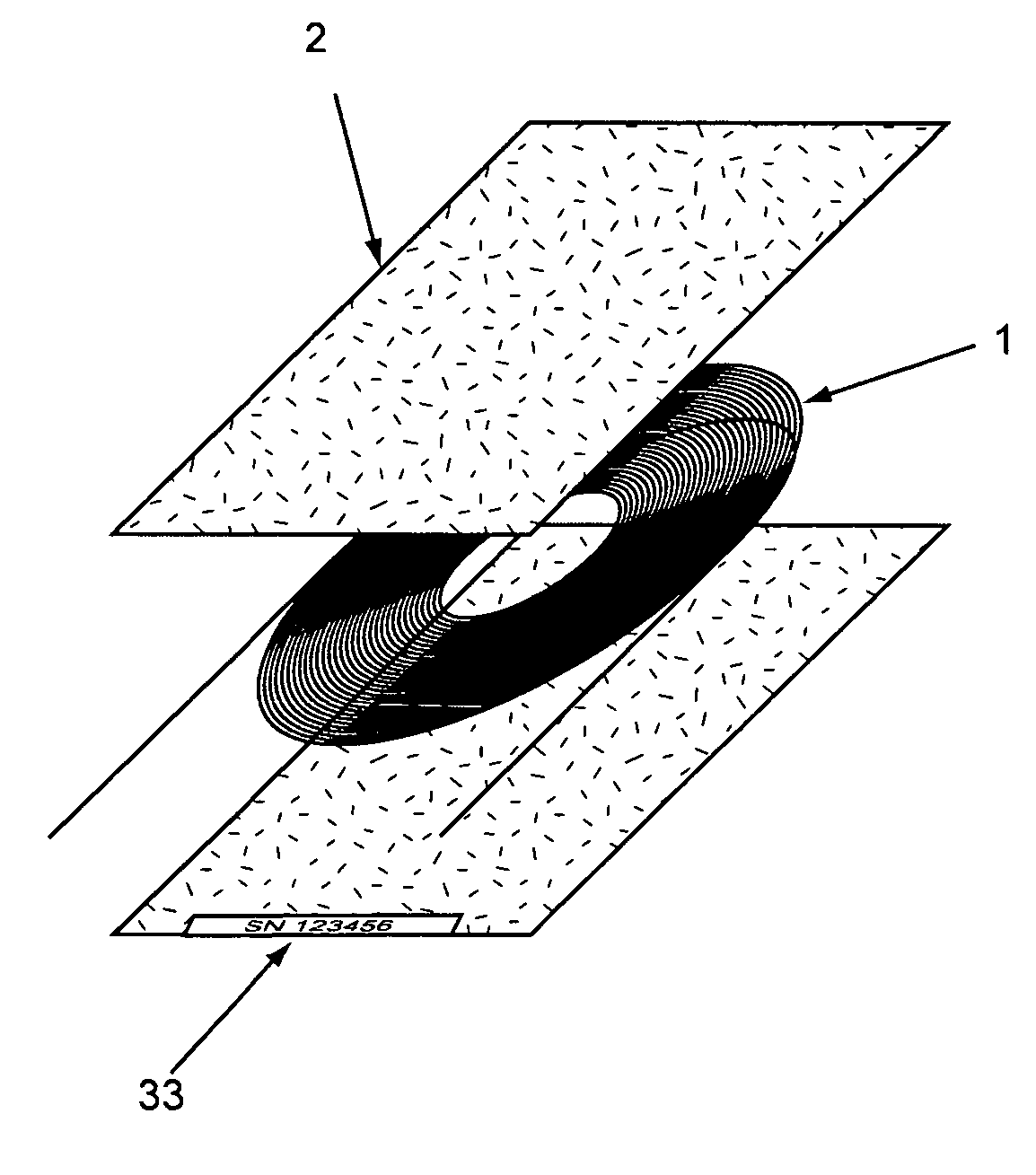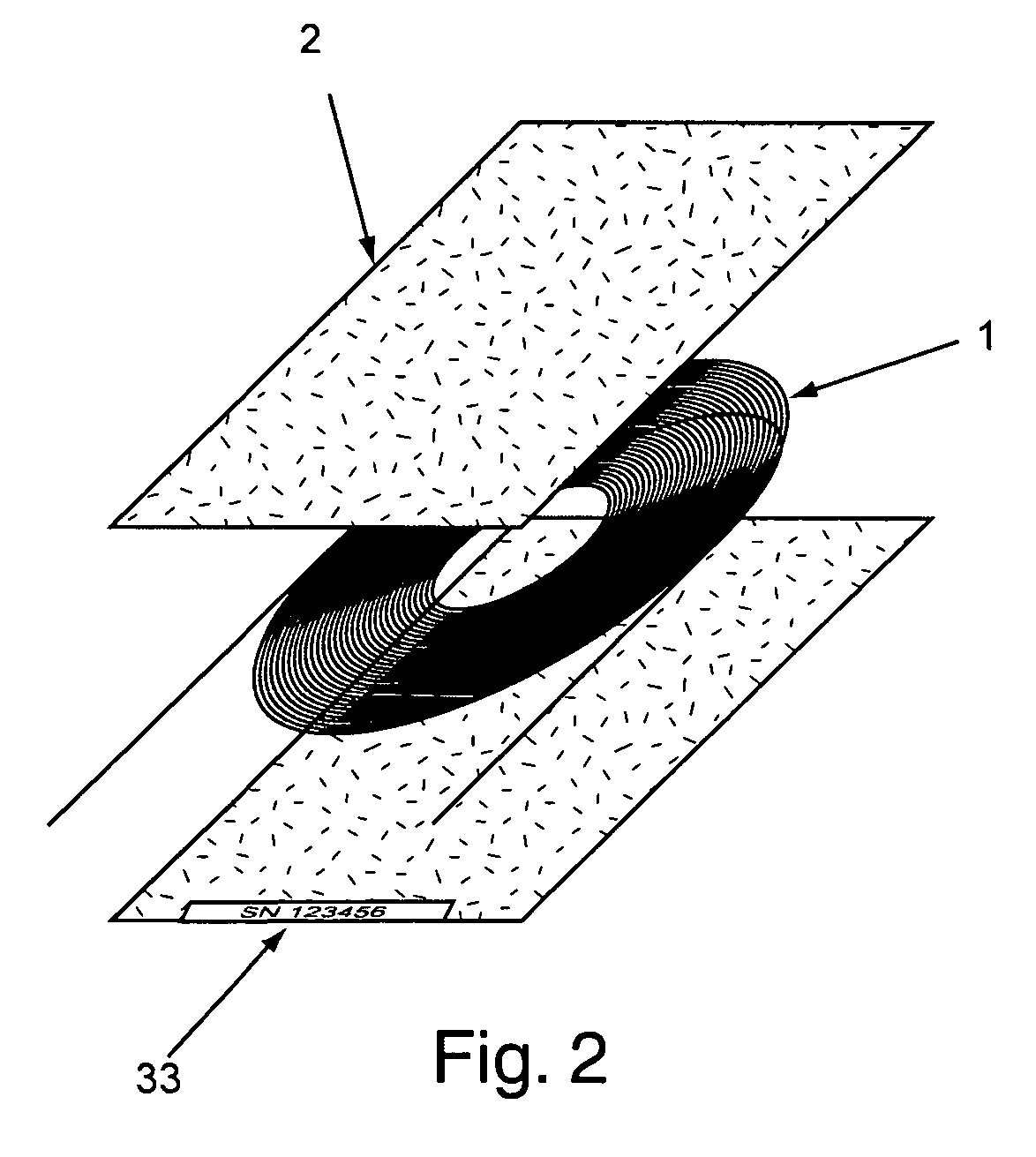This proved to be very limiting if a chemical sample to be analyzed contained compounds with a broad
boiling point distribution.
This results in very even heating of the
separation column along its entire length and consequently produces very efficient chromatographic performance, but at a significant cost.
Much energy is wasted.
Because of the large amount of power being consumed to heat the oven, large amounts of insulation must be employed to contain the heat, consequently, the bulky nature of conventional gas chromatographs can be directly attributed to the oven / insulation combination.
Due to the large amount of power and space required to thermally modulate and house the capillary
separation column when coiled on a conventional wire rack, this design is impractical for use in miniaturized or portable / transportable gas chromatographic systems.
While
power consumption was reduced, these gas chromatographs still consume relatively large amounts of power, on the order of a kilowatt, and are mostly confined to isothermal oven operation or very slow temperature
programming rates with limited upper temperatures when being used in a transportable mode where power supply is a relevant issue.
This severely limits the range of compounds that can be analyzed as well as increases the amount of time necessary for each analytical cycle.
While this development reduced the size of the gas chromatograph, the
power consumption continues to remain high at around 1 kW.
This technique provided for a large reduction in
power consumption versus
convection oven designs but suffers from inconsistencies in the thin conductive film thickness, as well as damage to the thin conductive film during handling, coiling and heating / cooling cycles.
These inconsistencies in film thickness along with damaged portions of the conduction film act to create variances in the resistance across the length of the capillary column which, when current is passed through the conductive film, causes localized hot spots to form on the capillary column surface.
A very negative consequence of these hot spots is a non-uniform distribution of
thermal energy across the length of the capillary column and ultimately an overall reduction in the chromatographic separating efficiency of the capillary column material.
Also, when larger currents are passed through the thin conductive film to achieve faster temperature
programming rates or to maintain the capillary column at higher temperatures, the localized hot spots begin to hasten the degradation of the thin conducting film which eventually leads to a failure of the
heating system.
In addition, the degree to which the capillary column can be compactly contained is limited by the insulation needed to protect successive coils from electrical short circuits, especially at higher temperatures above 200 degrees C., and the minimum
bend radius that the thin conductive film can withstand before breakage occurs.
This limitation usually results in a cylinder shaped arrangement of coils with a minimum
radius of approximately 7.5 cm and cylinder height dependent on the length of capillary column needed.
Yet another drawback to using this method to thermally modulate the capillary column stems from the fact that the deposition of thin conductive films to the surface of
fused silica capillary column material requires an intricate, detailed process that further complicates the manufacturing of the capillary column, thus severely limiting the variety of capillary column types available and manufactures willing to produce them.
While this technique solves the problem associated with the thin resistive film breakdown and hot spots of the previously discussed technique and consequently produces even thermal distribution across the length of the capillary column, the problem of having to electrically isolate successive coils from one another continues to limit the overall compactness of the design.
Additionally, the extra
thermal mass contributed by the resistively heated
metal sheath in which the capillary column is placed, dramatically increases the power consumption of the device.
It is stated in their patent that “a power supply capable of delivering up to 96 Volts at 12 Amps provides sufficient power to heat the tube (
metal sheath) to desired temperatures” which is on the order of approximately 1 kW and approaching conventional
convection oven power requirements, once again making it an impractical choice for the
miniaturization of temperature programmed gas chromatographs.
However, due to the extra steps involved with inserting the heater wire into a length of insulating sheath and then inserting the bundle of capillary column material, fragile sensor wire, and sheathed heater wire into a second insulating sheath, it becomes a very tedious, nearly impractical exercise to manufacture a
separation column assembly in this manner any longer than 3 meters.
This limitation in column length reduces the range of chemicals that can be separated in a single analysis and, while the power consumption is greatly reduced when compared to a conventional GC oven, in reality the column assembly still consumes enough power to prevent its use in truly portable, battery operated, temperature programmable GC designs.
Besides the complexity of manufacturing such an assembly, one drawback that this design presents deals with the round cross-sectional nature of a tightly packed, randomly arranged series of elements in a toroidal geometry.
Because of the randomly arranged coils within the torus geometry, this results in uneven heating across the entire length of the capillary column and as a consequence, a reduction in the chromatographic separating efficiency of the capillary column material.
Depending on the type of chemical analysis being performed, this could result in unacceptable performance variations after a capillary column assembly change is made.
A second general problem associated with the various “single unit” capillary column assembly designs deals with the extra manufacturing burden generated from having to couple all of the various elements into a precise orientation and then the extra steps involved attaching them to insulated support structures and electrical lead connections.
This usually involves having a person with expert technical skill make the column assemblies and ultimately a much higher end cost to the
consumer.
While this technique may result in a minimal amount of power being needed to thermally modulate the separation column in a fairly
compact form, the amount of specialized hardware necessary to perform this function make it an expensive, impractical choice for use in miniaturized portable / transportable temperature programmed gas chromatographs where ruggedness and simplicity of design are better suited.
This is most likely done in order to provide a more even
thermal energy distribution from the heat lamp to the surface of the capillary separation column, however, this results in a much larger than necessary power requirement to heat the device.
 Login to View More
Login to View More  Login to View More
Login to View More 


